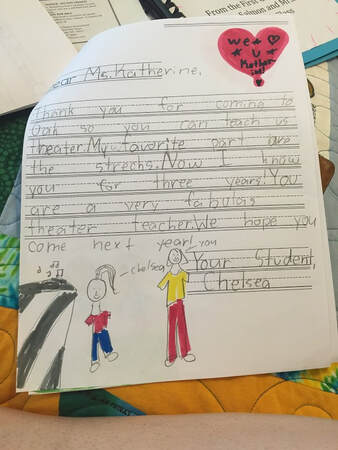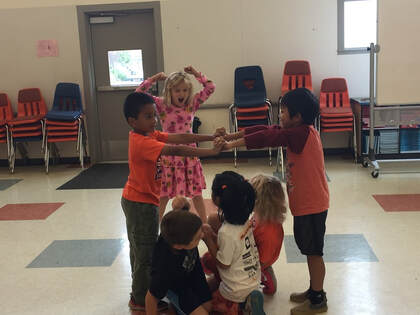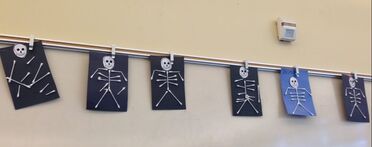Why I Teach TheatreWhen I was five years old, in kindergarten, I had to make a poster that was all about me: my name, hand-drawn pictures of my family, the kinds of things I liked to do, and so on. Under the section titled What I Want to be When I Grow Up, I wrote that I wanted to be a “library helper” – I didn’t know the word for librarian at the time. At the time, I was shy and reserved, but had an active imagination that books unlocked. I loved the stories and the adventures I could experience through reading.
In middle school I discovered the theater, where I could have those same kinds of adventures, but I could do it with a group of like-minded friends who accepted me for who I was. Over the years, it was through the theatre community that I found my voice, took on leadership positions, and developed a rich sense of creativity and personal discovery. My goal as a theatre educator is to give that experience to future generations of students: the people who are going to change the world and make it a better place. I am dedicated to student-centered learning by creating spaces that are safe, playful, and engaging for students of all backgrounds and interests. I’m interested in using theatre to teach the whole child: to help them grow into well-rounded individuals while using the arts to integrate a wide variety of academic and interpersonal topics. To do so, I have five major points that I incorporate into my classrooms: CRAVE (creativity, respect, arts integration, voice, and engagement). Creativity: students are encouraged to explore their creative sides in the drama classroom. They take risks, try new things, and see what happens. I’ve become highly practiced in the art of creating well-structured, organized lessons which incorporate different learning styles, all towards practicing creativity and risk-taking. Lessons are structured to give the students the opportunities to take risks while feeling supported by the group. Respect: respect is essential to the community of the classroom. Significant time is spent at the beginning of courses towards creating a respectful learning community, both between teacher/student and amongst students themselves. Without a respectful learning community, the work cannot be done. Arts-integration: there are great opportunities for overlap between the arts and academia. I structure my classes to include both the fundamentals of theatre and ways to cross theatre with the humanities. Examples have included lessons integrating theatrical tableaux with multicultural paintings, or using movement to unpack the complexities of scientific concepts. Voice: students are encouraged to discover their voices and tell their stories. Through student-centered lessons, young actors can express themselves and feel safe doing so. I especially prioritize giving students exposure to multicultural curriculum. I am of a mixed-race background, so I’m especially interested in giving my students of color ways to use their voices within the learning community. I aim to give my students ownership over their education while stretching them beyond their preconceptions of their given identities. Engagement: I want my students to feel engaged and excited, every single time they come into the classroom. My lessons are structured so as many students get the opportunity to participate as possible. I make sure every student has something active to do throughout the course of the day, even if they aren’t performing themselves. I also appreciate the value of play in a student’s work: when students are asked to work so hard throughout their days, it is important to give them the opportunity to have some fun and recharge. I understand that students benefit from clearly scaffolded structures while needing to be challenged creatively and in their understanding of the world. There is a balance in how this engagement takes form. Ultimately, I aim to bring elements of fun and deep thought into all my classes. |
Quotes from Kids:
|








